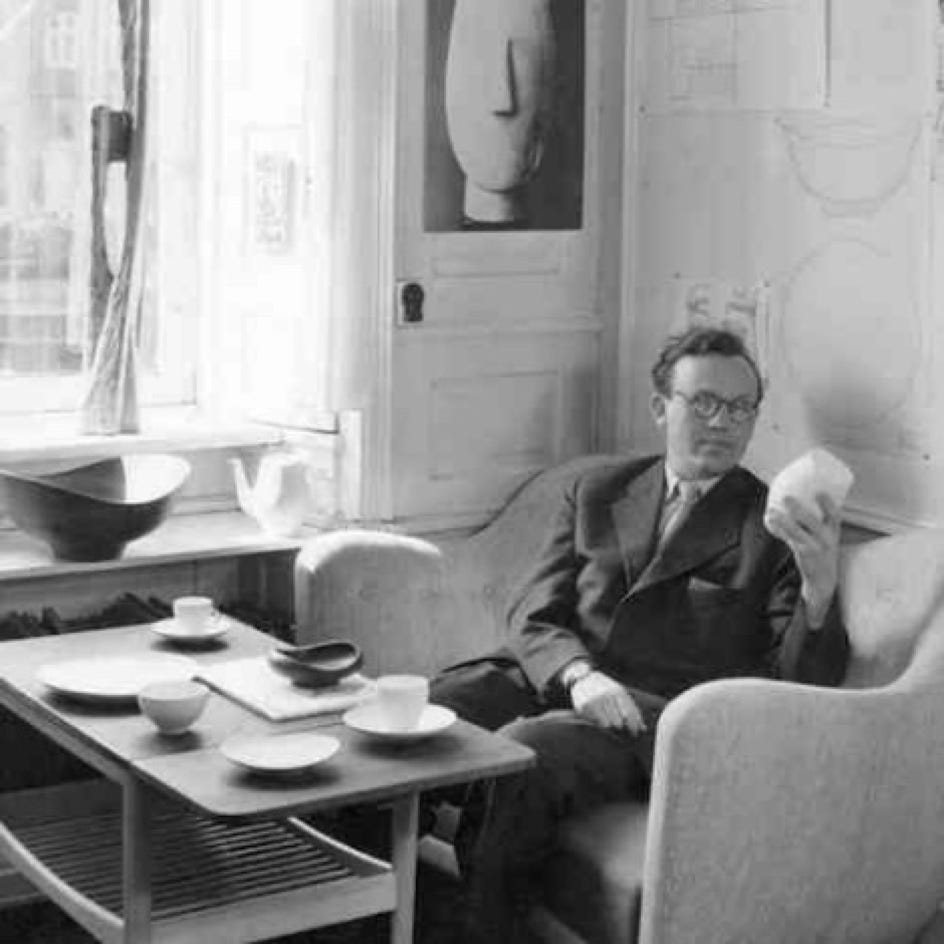15% off with DESIGN15

The Ross coffee table was particularly unconventional at the time it was designed, with its delicate steel structure, organically shaped top and stainless steel inlay holding a steel vase (the table is available with or without a vase).
Many of Finn Juhl's creations are the result of commissions, often as part of his work as an interior designer. The Ross coffee table is no exception, commissioned in 1948 by a famous Danish law professor by the name of Alf Ross.
The table may not be as famous as some of Finn Juhl's iconic designs, but the Ross table has plenty of character and perfectly reflects Finn Juhl's sense of detail and functionality.
Materials Veneer and stainless steel
Dimensions 120 x 30 / 60 x H58 cm
Ross Coffee table
from

As a teenager, Finn Juhl (1912-1989) wanted to become an art historian after having been fascinated by fine arts since childhood. His father prevented him from doing so and he studied architecture. Later, once his reputation as a furniture designer had been acquired, he would speak of himself as a self-taught man, certainly in reference to this thwarted vocation which forced him to make his intellectual journey alone. His very singular style owes much to this non-linear trajectory, with a very unacademic interpretation of art visible in his work. Finn Juhl began his studies in 1930, a key period that saw the birth of modern design and furniture.
His ultra-modern offices in the center of Copenhagen greeted visitors with a huge Japanese paper fish, a symbol of imagination. And rather than approaching furniture design from a functional, classical perspective, Finn Juhl approached his work as a sculptor. He sought beauty in volume and form, life and expressiveness. An approach that in the 1940's and 1950's was totally unprecedented. For Finn Juhl, it was clear that a piece of furniture could not be limited to a function, but also had to express an artistic sensibility.
While he remains world-famous for his furniture, Finn Juhl also designed several interior architecture projects and a few industrial products, including IBM typewriters. His greatest commercial success was with the Baker Company in the United States, which allowed him to mass-produce several pieces of furniture.
As an architect, he is known for the interior design of the United Nations Council in New York.